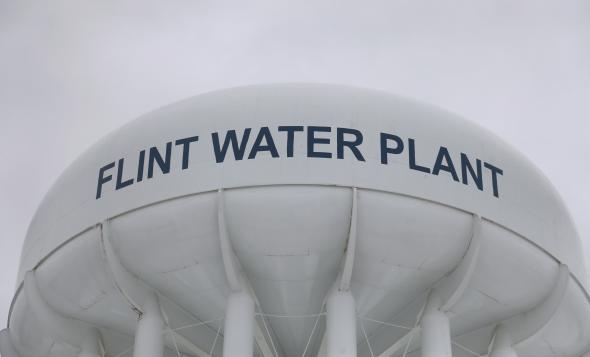The Michigan state government has come under heavy criticism in recent weeks because of reports that it downplayed and even actively tried to cover up problems with Flint’s drinking water before incontrovertible evidence of a crisis became public. (The city switched to a new drinking water source in April 2014; its water has since been plagued by high levels of toxic substances, especially lead. The situation has gotten so dire that the National Guard and FEMA are involved.)
The federal government also knew there might be toxic material in the city’s water long before any public official acknowledged as much—a controversial decision that the EPA’s top Midwest official, Susan Hedman, defended to the Detroit News in an interview this week. Hedman argues that the EPA did its best to address the issue behind the scenes and would have been acting inappropriately if it had made any public announcement about the potential problems:
Hedman said federal law clearly lays out the state and federal responsibilities in overseeing safe drinking water. The EPA’s role is to establish treatment standards and monitoring techniques, and provide technical assistance, she said. The state acts as the primary regulator of water operations.
“It is important to understand the clear roles here,” Hedman said. “Communication about lead in drinking water and the health impacts associated with that, that’s the role of [the Department of Health and Human Services], the county health department and the drinking water utility.”
The crux of the matter here is the issue of “corrosion control.” The water from Flint’s new source—the Flint River—was more corrosive than the water from its old source. That’s what caused lead from water pipes to leach into the drinking water that comes out of taps. But the city might have mitigated the issue—and should have, according to federal law—if it had treated the water to make it less corrosive. The EPA made inquiries about corrosion as early as February 2015, at which time Michigan state officials replied that Flint had an “optimized corrosion control plan.” It didn’t have any plan, in fact (nice one, state Michigan officials), something which the EPA now acknowledges it had confirmed for itself by April 2015. In June 2015, an EPA employee named Miguel Del Toral had written an internal memo about the problem (and confirmed the “the presence of high lead results in [Flint] drinking water” through testing). Del Toral’s memo became public via a Flint resident to whom he’d given it.
Here’s what the EPA did after that happened: It put out a press release referring to Del Toral’s data as “initial results” that other officials would need to “verify and assess.” Hedman, the regional EPA boss, told the mayor of Flint in a private email that “the preliminary draft report should not have been released outside the agency.” At the same time, Michigan state government spokesperson Brad Wurfel said that “anyone who is concerned about lead in the drinking water in Flint can relax”; Wurfel, who has since resigned, also later called Del Toral a “rogue employee.” The EPA didn’t say anything further to defend its own analysis—which, as it turns out, was completely correct.
By September 2015, independent studies had confirmed that there was lead in Flint’s drinking water which was causing lead poisoning in children. In October 2015 the state of Michigan acknowledged it had screwed up and the city stopped using the Flint River as a water source. And in November, the EPA finally released an official version of Del Toral’s report. Meanwhile, the Detroit News says this week, “unfiltered Flint water is still not safe to drink.”
